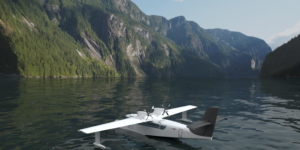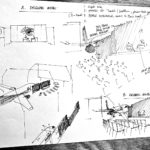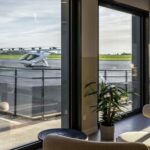Electric seaplane developer ElFly is aiming to establish a “transportation system for the future” along the idyllic coastline of western Norway.
The company is designing versatile all-electric seaplanes to transport people and goods, and plans first to launch in its home market before expanding operations to other locations.
The idea behind ElFly is to provide a sustainable option for passengers wishing to travel from city centre to city centre – or, in the case of this part of Norway – from one fjord to the next.
Potential market
Speaking to FINN, Eric Lithun, chairman of the ElFly Group board, said: “Around 80% of the world’s population live by the sea, which basically means they live by an airport.
“The innovation part of the whole ElFly story is that this is the seaplane of today, but it is really a land based plane that somebody removed the wheels and put two kayaks underneath.
“Our dream is to have commercial operations in 2030 with approximately 15 planes flying on the west coast of Norway. That’s the plan. If it works here, then we could expand to any other kind of market.”
 He added: “Globally there are approximately 4,500 seaplanes, but if we get this up and running, this could be a transportation system for the future. I think we can expand the pie [of seaplane services], rather than just eating up the market.”
He added: “Globally there are approximately 4,500 seaplanes, but if we get this up and running, this could be a transportation system for the future. I think we can expand the pie [of seaplane services], rather than just eating up the market.”
Founded in 2018, Elfly Group is headquartered in Bergen but has research and development facilities in Tønsberg.
Flexible sea terminals
The company envisages small and flexible sea terminals that will facilitate the boarding and unboarding of our passengers quickly and cheaply, without the need to build complex infrastructure.
The aircraft is under development but is likely to have two electric motors with a maximum output of 950 kW, for a top speed of 250 km/h, and a cabin equipped for nine passengers plus luggage.
Lithium batteries will give the aircraft an operational range of 200 km, with today’s battery technology, though this could be improved as energy density increases.
The cockpit will be equipped for either one- or two-pilot operations.
Lithun said that the aircraft would be able to land in two-metre high waves – something that “would not be comfortable at all, but it is capable of”.
Norway is an ideal location to trial this new network of environmentally friendly seaplanes.
With more than 1000 fjords and 450,000 lakes, most of the Norwegian population lives close to a potential “runway”.
Subscribe to the FINN weekly newsletter

